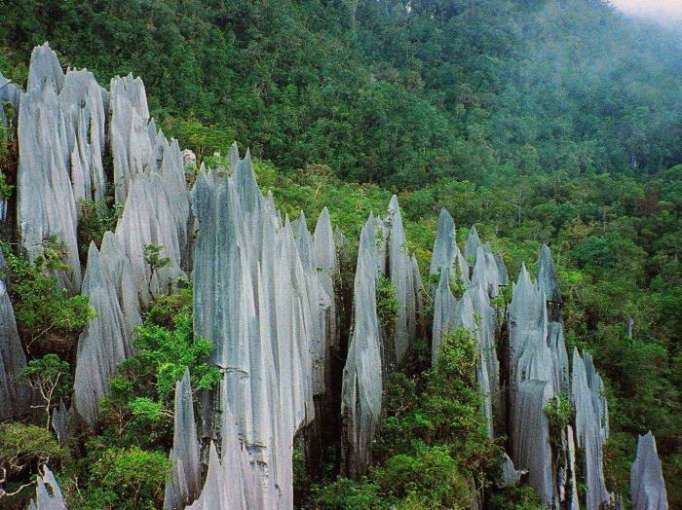Nitrogen is vital for plant growth, so its availability controls the amount of greenery that can exist across the planet.
The prevailing idea among scientists is that all the nitrogen used by plants comes from the air, but a new study has revealed over a quarter originates in the Earth's bedrock.
"This runs counter the centuries-long paradigm that has laid the foundation for the environmental sciences,” said Professor Ben Houlton, an environmental scientist at the University of California, Davis and co-lead author of the study.
Plant life plays a major role in shielding the world from the worst effects of climate change, as it sucks large quantities of carbon dioxide from the atmosphere and sequesters – or stores – it.
This has led many experts to call for more trees to be planted as part of global efforts to tackle climate change and meet the terms of the Paris climate agreement.
“We think that this nitrogen may allow forests and grasslands to sequester more fossil fuel carbon dioxide emissions than previously thought,” said Professor Houlton.
The results of the study were published in the journal Science.
Nitrogen from rocks can enter ecosystems when rocks weather naturally, either via tectonic movements or when the rocks chemically react with rainwater.
As this previously unrecognised source could be fuelling the growth of many more plants, ecosystems around the world may be sucking more emissions from the atmosphere than past climate models have predicted.
Scientists have long observed a discrepancy between the amount of nitrogen available in the atmosphere and the amount accumulating in soil and plants.
However, until now it has not been clear how this discrepancy came about.
"We show that the paradox of nitrogen is written in stone," said the other co-leading author Scott Morford, a graduate student at the time of the study.
"There's enough nitrogen in the rocks, and it breaks down fast enough to explain the cases where there has been this mysterious gap."
The amount of nitrogen available from this newly discovered source varies significantly from place to place, with more weathering of nitrogen-rich rocks found at northern latitudes.
Other areas with plenty of rock nitrogen include mountainous regions like the Himalayas and Andes.
This knowledge could help guide efforts to conserve ecosystems.
"Geology might have a huge control over which systems can take up carbon dioxide and which ones don't," said Professor Houlton.
"When thinking about carbon sequestration, the geology of the planet can help guide our decisions about what we're conserving."
"These results are going to require rewriting the textbooks," said Kendra McLauchlan, programme director in the National Science Foundation's division of environmental biology, which co-funded the research.
"While there were hints that plants could use rock-derived nitrogen, this discovery shatters the paradigm that the ultimate source of available nitrogen is the atmosphere.”
Nitrogen is not only a crucial ingredient for life on Earth, it can also form dangerous pollutants and be used to make fertilisers essential for the world’s food supply.
“A discovery of this magnitude will open up a new era of research on this essential nutrient,” said Ms McLauchlan.
The Independent
More about: science
















































